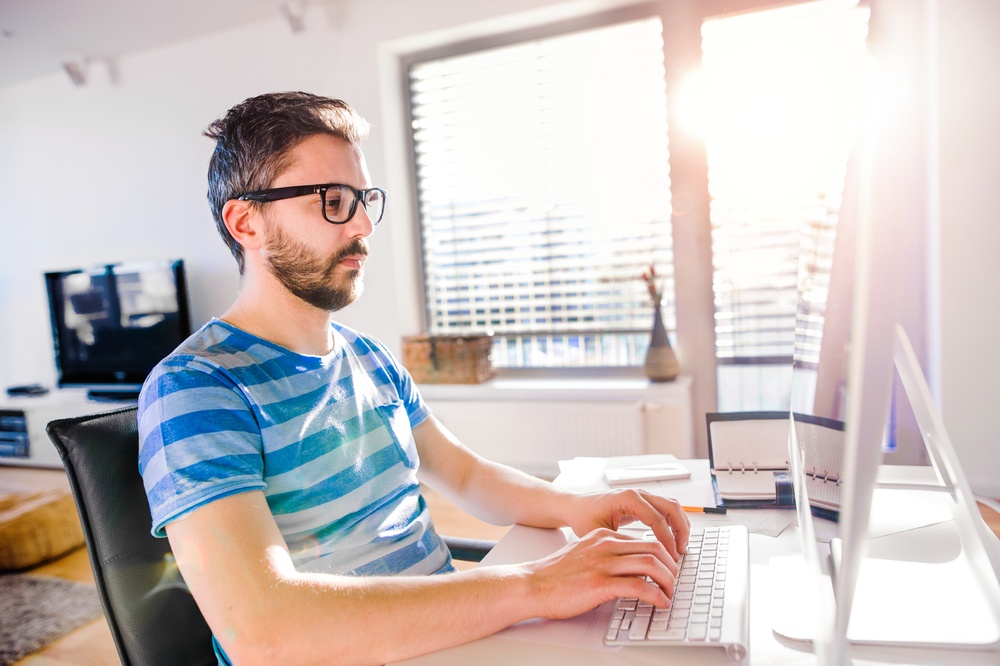Making The Most Of Sunlight
 Contributed by
Amy Picanço
April 22, 2016
Contributed by
Amy Picanço
April 22, 2016

From the functionality of an office’s wiring to aesthetically pleasing and productivity-conducing design – interior architecture has as much of an effect on a company’s results as its employees do. The most productive offices make certain that their designs make the most of sunlight.
Read below to find out how light affects our work environments and how making proper use of it can legitimately increase productivity.
There are few places where the sun shines brighter than it does in Singapore. Just 1º north of the equator, our tiny little island takes a heavy beating from the sun’s rays. Our summer and winter solstices (the shortest and longest days of the year in terms of sunlight) are only minutes apart, so it’s hard to not come into contact with it. We often labor over the high humidity and high heat, sometimes feeling as though we’re trying to move from one indoor place to the next.
However, there are huge positives in having 12 hours of sunlight almost year round. A recent study by scientist Mirjam Muench reported that in a study of two groups of people, “[those] who [only] had daylight were significantly more alert at the beginning of the evening, and subjects who were [only] exposed to artificial light were significantly sleepier at the end of the evening.”
Yet it doesn’t stop with simply feeling tired – a common symptom of a long day’s work. A study conducted at Oxford University discovered that employees who sat next to windows were more alert, happier and harder working compared with those in the middle of the office under artificial lights.

In fact, at the Cheltenham Science Festival (2013), Oxford neuroscientist Russell Foster explained just how light-deprived workplaces are and, as a result, how light-deprived we become ourselves. He explained that a sunny day provides 100,000 lux (a measure of brightness), further divulging that to receive the maximum benefits of sunlight, the average person needs 1,000 lux of brightness. The average office, he described, provides about 300.
Research continues to show us that, ultimately, lower exposure to sunlight equals lower productivity. It seems hard to believe that, in a country where it’s hard to stay out of the sun, access to it in the workspace would be a problem.
However, it often works out that those who get the most access to sunlight are managers – decision makers, whose private offices absorb the larger portion of the sun’s vibrance, and general staff work under beams of fluorescence and limited amounts of sunlight. It can also work out that offices lack windows and other sources of natural light, entirely.

It’s hardly news that sunlight increases performance as more offices begin to move towards better designs and layouts of providing everyone or simply more people with exposure to natural light. In concept, changing the workspace to give more people more exposure to natural light is easier than it is in practice. However, design companies, such as ours, have experience from diverse backgrounds that allows us to make offices which yearn to increase their performance a reality.
By creating open floor plans and getting rid of the multiple barriers between each person, it naturally becomes easier to get a share of sunlight. With inventions such as 3M’s “Daylight-Redirecting” film, it’s now possible to redirect sunlight from building windows as far as forty feet into offices. It’s important when designing office spaces that everyone gets maximum exposure to a natural productivity enhancer.
Although it’s unrealistic to move entire offices for one, albeit important, factor there are still many ways to use the power of sunlight by simply moving/adding/removing furniture, and to create similar effects of natural light: temperature and, if possible, repainting.
By moving desks so that multiple points of sunlight hit them, there becomes less of a need for one whole part of the office to be structure-free while simultaneously reducing glare. It also helps if staff workspaces are around 15 ft. from natural light, which depends on the current layout of the office.
If it’s too much of a process to redo the layouts, simply changing the temperature can help. Although we prefer the indoor air-conditioning over the sweltering outdoor heat, neither is actually better for performance. Rather, a temperature of 22ºC – not too cold, not too hot – is the optimal temperature for best performance.
Neutral colours produce an open atmosphere which, when combined with a more open floorplan, creates a much more relaxed atmosphere; with additions of yellow or green, the atmosphere can become one that’s open and relaxed while also fostering creativity and communication.
By designing an office or altering the one you’re already in to make the most of sunlight, you’ll be able to see the increase in energy in yourself and co-workers around you. If you’re thinking of renovating or moving office anytime soon, remember Aym Design is here to help.










Sorry, the comment form is closed at this time.